12 key consumer trends of 2012
At the end of the year it is customary to sum up and make predictions. And we will support the tradition: we offer you to look into the next year now and, perhaps, be on the crest of a new wave. As they say - who forewarned is forearmed!

We are now witnessing the era of transition from a consumer society to an information society, and therefore we present 12 key consumer trends for 2012 - interspersed with information and modern technologies - according to one of the leading independent analytical companies trendwatching.com .
')
According to researchers, next year the difference in the development of brands will be more and more vivid - some companies will be on the verge of extinction, while others will find "their own wave" and their life will be in full swing. And now creative and brave brands have more opportunities than ever to conquer markets.
By the way, trendwatching.com has a healthy sense of humor and creativity, and therefore comes up with its own terms for almost all new trends and processes. Therefore, do not try to translate literally the English names of trends - we translated only their meaning, but not a pun. And that was not able to translate everything!
So, 12 key consumer trends of 2012
The new target audience, which began to focus more and more marketing activities - is the Chinese.
The wealthy Chinese actively travel around the world and spend a lot of money, so department stores, airlines, hotels, museums and even entire cities and countries will roll out the “red carpet” before them and endow them with special services, additional benefits and offers.
And do not forget also about other residents of rapidly developing countries - Hindus and Brazilians, who are standing on the receiving side of the Red (or Orange, or Green) carpet.

And here are a couple of examples:
In July 2011, Hilton hotels around the world created a service aimed at travelers from China. The program is called “Hilton Huanying” (from the Mandarin dialect “welcome”) and is available in 30 Hilton hotels around the world, offering specialized assistance for guests from China, including registration in their own language and in-room amenities, such as Chinese tea and TV channels. , as well as slippers and a welcome letter in Mandarin dialect. A buffet breakfast is also available, with a menu of rice water, dim sum and fried noodles.
For three years, Australia has allocated 30 million US dollars for presenting the country as a luxurious place for rich tourists from China. The Australian Tourism Board has conducted a marketing campaign in 13 mainland cities with the hope of reaching more than 30 cities by 2020.
Read more in the full version .

The do-it-yourself trend in 2012 will bring even more traffic. People want to control their life and health - literally every step and even a sigh.
And a variety of gadgets are ready to meet the new and new needs of people and provide functionality for any request.
Apple's Store today offers 9,000 mobile medical applications (including about 1,500 applications for cardiac exercise, more than 1,300 applications for diets, more than 1,000 applications for combating stress and relaxation, and more than 650 applications for women's health) and by the mid-2012 this figure will reach 13,000 .
A few examples:
Launched in November 2011, the Jawbone's Up personal wrist tracker allows you to track the user's movement, power, and sleep patterns. The device syncs with the iPhone application, and users can set the device to vibrate when they are inactive for some time, compete with friends, and even earn real-life rewards to complete tasks related to activity.
Skin Scan is an application that allows users to scan and monitor moles over time to prevent malignant skin cancer. The application reports on the feasibility of a visit to the doctor.
Lifelens has created a smartphone app that diagnoses malaria. The application can analyze an enlarged image of a drop of blood (obtained from a simple puncture of a finger) and identify the malaria parasites.
Read more in the full version .
In 2012, consumers will not only continue to hunt for great deals and discounts, but they will do it with pleasure, if not with pride. It will be more than just saving money: it is an exciting event, a chase, an indicator of resourcefulness, and therefore a source of status. And brands will offer more and more interesting and non-trivial loyalty programs for their customers.
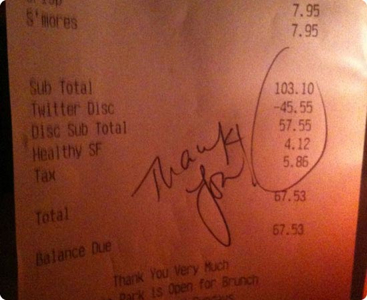
Here are just three reasons why DEALER-CHIC will only expand in 2012:
What's next? A broader “deal ecosystem”, more personalization, more loyalty schemes, more pressure on brands — all of this serves to develop superb transaction resilience as an integral part of all products sold and advertised.
Full version .
 Ecology and safe lifestyle will remain the most acute global issue for many years. Based on their own principles, and sometimes under the pressure of the new legislation, manufacturers will push buyers to carry out their belongings for recycling, take them for recycling and do something constructive with them.
Ecology and safe lifestyle will remain the most acute global issue for many years. Based on their own principles, and sometimes under the pressure of the new legislation, manufacturers will push buyers to carry out their belongings for recycling, take them for recycling and do something constructive with them.
And here are some fresh examples.
As part of the initiative of the American company Patagonia Common Threads Initiative , any item purchased from Patagonia, whose service life has ended, can be recycled to turn it into a new fiber or fabric. The company says that at the moment it has received 45 tons of clothes for recycling and turned 34 tons into new clothes.
The innovative scheme of the Nike Reuse-A-Shoe scheme (first launched back in the distant 90s!) Has collected and reworked to date more than 25 million pairs of worn Nike shoes. Old sneakers cut, split and grind into a material called Nike Grind, from which then make coverings for gyms and playgrounds, as well as a variety of Nike products.
French cosmetics brand Garnier entered into a partnership with the US environmental charity organization Terracycle in April 2011 to conduct a Personal Care and Beauty Brigade program. Offering free collection and processing of all care and beauty products, the team traveled to American cities where visitors could bring packaging for cosmetics from cosmetics (and get points or money). Then the packaging was used to create equipment for sports fields in the United States. In addition, waste bags could be sent free of charge using UPS, as Garnier took all the costs on itself.
Full version .
Cashless payments are becoming more simple and easy, which is actively helped by new technologies - soon you don’t even need to present the bank card itself when paying. And such giants as MasterCard and Google will actively introduce worldwide innovations for cashless payments. Many of these initiatives use near field contact communication (NFC, Near Field Communication), which provides for the exchange of encrypted data between two devices located in the neighborhood ("near connection"). For example, a reader located next to the cash register. Buyers who have saved credit card information on a smartphone with NFC can pay for purchases by swiping a smartphone next to a reader or leaning a smartphone on such a device, instead of using the credit card itself.

In June 2011, the American online payment system PayPal unveiled a mobile payment application for Android devices. Users install the app, activate the PayPal widget, and then may request that they send and receive money from another person using their smartphone and PayPal account. With NFC, two users can keep their devices close by for instant money transfer.
The iZettle device, released in Sweden in June 2011, allows you to pay by credit card on the go. A portable chip and PIN reader is inserted into the iPhone or iPad and uses the iZettle application, that is, card transactions can occur instantly. With this device you can also pay bills or make money transfers. Operations can be tagged with images, notes or location data that users can post on Facebook and Twitter to share their purchases with friends.
Read more .
Due to the excessive urbanization of world space, which will not slow down in 2012, we can expect the growth of the consumer segment at the base of the city pyramid. Sellers will need to meet the growing demands of consumers at a level below the middle class: people with low incomes, sometimes even illiterate, who want to use all the possibilities and innovations of the modern world.
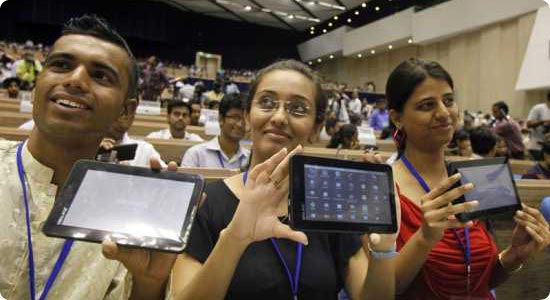
Just a couple of examples:
Aakash is an Android-based tablet computer with wifi, manufactured in Hyderabad (India) as an inexpensive but fully functional device. The expected retail price will be $ 60, and the price for students (subsidized by the Government of India) will be around $ 35.
The Pillar ATM ATM, developed by NCR , uses biometric technology, which makes it convenient to use by illiterate or semi-literate people. The device has a contactless card reader, a biometric fingerprint scanner, buttons for quick cash withdrawal, a cash dispenser and a receipt printer. Users of free-standing devices simply place their thumb on the sensor and press a button of a certain color indicating the amount they want to withdraw. In the 3rd quarter of 2011, NCR began testing five prototype Pillar ATM ATMs in the United States to launch the device in developing countries.
Full version .
In 2012, rely on “crowdsourcing” to continue the restructuring of business processes and create an infinite number of innovations. In the end, getting a chance to contribute to or become part of something greater than the person himself will always be popular with people.
Anything that consumers can contribute to without much effort, and sometimes without any effort, will become even more popular in the new year. Thanks to the active distribution of various sensors in mobile phones, people will be able to easily betray information about where and what they do and what situation prevails around them.
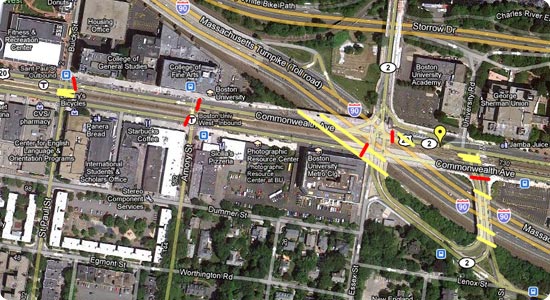
For example, in March 2011, a test run of the Street Bump application developed in Boston was held, which uses sensors on smartphones to transmit real-time road condition maps to city officials. The Android application uses accelerometers and GPS technology in users' phones to record the time and venue of the user's car with a pothole, information about which it automatically records and transmits.
Read more .
But this is a very interesting trend and even somewhat paradoxical, however, very soon the brands will become fashionable and important to share objective information about themselves - both positive and negative. The most advanced brands will no longer try by all means to hide their "skeletons" away in the closet, but begin to talk openly about their mistakes and criticism, along with their achievements. Sincerity and truthfulness have always been in demand, and this approach will add humanity and trust to the brand, and also show its maturity, flexibility and sense of humor.
And here is a recent example: in July 2011, the American fast food vendor Domino's launched a monthly advertising campaign in New York. By renting a huge billboard in Times Square, the brand broadcast good and bad customer feedback on Twitter on a digital screen.

Read more .
In 2012, there will be a merger of three megatechnical trends: the screens will be:
ubiquitous / mobile / cheap / constantly working;
interactive and intuitive (via touch screens, tablets and other things);
interface to everything that lies outside the screen (via the mobile Internet and the "cloud").
In the future, consumers will care more about the screen than about themselves - or rather, care about what you can access with the help of the screen.
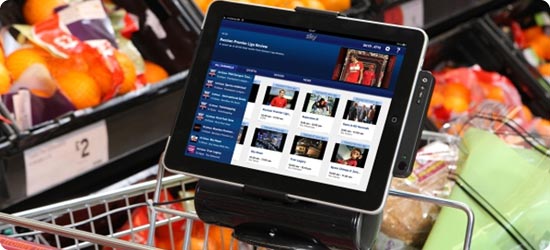
Sainsbury's supermarket chain in the United Kingdom, in partnership with Sky TV, allows shoppers to watch key sporting events during their shopping trip using the iPad’s built-in iPad and speakers. Sky Go trolley is equipped with a swivel holder for the iPad, speakers and a built-in battery with a self-charging solar panel. Sports-loving buyers just have to download the Sky Go streaming application on their tablet and then download it to the cart installation module.
The Parlamentarium of the European Parliament is the largest visited center in Europe and combines interactive multimedia and history in 23 languages, showing the daily life of EU citizens. A 360 ° digital surround screen takes visitors to the very heart of the European Parliament, and touch screen applications provide information about members of parliament. One of the Center’s unique features is broadcasting in all 23 official EU languages using iPod Touch devices reconfigurable into any language.
So, wait for the consumer culture to be influenced by the pervasive screen culture and will exist in it.
Read more about this trend .
In 2012, an exchange with a surcharge promises to become more popular than the purchases themselves - after all, it is profitable and allows you to try out all new and new products. Yes, consumerism in its highest manifestation! And large sites, of course, will only encourage and help consumers in this trend.
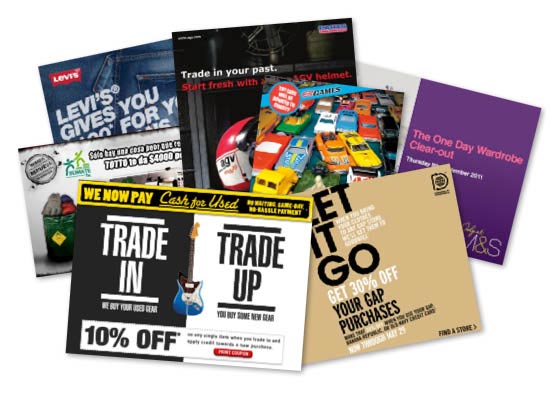
Amazon Student , launched in August 2011, allows students to scan barcodes on their existing books, DVDs, games, or electronic products and find out the value on the counter sale. If the cost is satisfactory, a shipping label is generated, and funds are transferred to an Amazon gift card.
And the American company DealsGoRound allows users to resell and buy expired offers of Groupon, LivingSocial and BuyWithMe.
Full article: trendwatching.com/trends/12trends2012/?recommerce
Virtually all markets will begin to gain high-risk and go beyond the usual brands. Deliberate provocation will seduce both middle-class consumers and young people, who set the fashion for others and increasingly behave in the market.
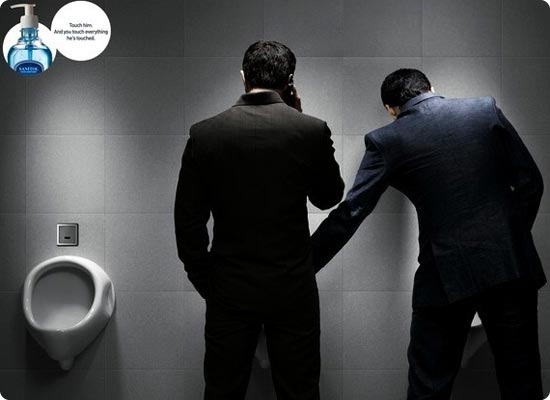
Fully succumbing to the effects of a categorical and indomitable world without censorship, experienced consumers no longer behave like last year’s, easily shocked, inexperienced mediocrity. With the ability to have more open conversations, access to more daring innovations, more risky events, these consumers increasingly value brands that go beyond the traditional framework.
Take an example - and dare if you dare! In 2011, Diesel India conducted an in-store advertising campaign called “Sex for sale. But, unfortunately, we sell jeans ”, during which when buying from $ 150 a sex toy was offered. Knee J leatherette knee pads came in a package with an image of obscene old comics with the subtitle “Knee jerk guaranteed” “Knee Jerk Reactions Guaranteed”.
Full version .
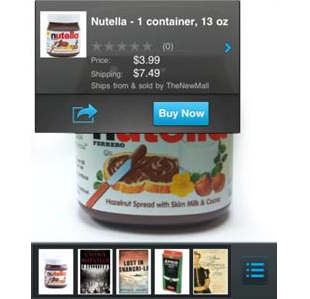 Consumers are getting used to the ability to find almost all the necessary information on the Internet or in print, but in 2012 it will be possible to instantly satisfy with visual information. The general tone will be set by programs that allow you to learn about something by a single image or sound. Such services will become more and more "smart" and popular.
Consumers are getting used to the ability to find almost all the necessary information on the Internet or in print, but in 2012 it will be possible to instantly satisfy with visual information. The general tone will be set by programs that allow you to learn about something by a single image or sound. Such services will become more and more "smart" and popular.
A few examples:
Look for other examples in the full version .
******
Plunged into the future? Want a brave new world come as soon as possible? Then let's start building it yourself! Happy and productive new 2012!
PS: a question for the habrasoobshchestvo - which of the trends you found the most unexpected or unlikely?

We are now witnessing the era of transition from a consumer society to an information society, and therefore we present 12 key consumer trends for 2012 - interspersed with information and modern technologies - according to one of the leading independent analytical companies trendwatching.com .
')
According to researchers, next year the difference in the development of brands will be more and more vivid - some companies will be on the verge of extinction, while others will find "their own wave" and their life will be in full swing. And now creative and brave brands have more opportunities than ever to conquer markets.
By the way, trendwatching.com has a healthy sense of humor and creativity, and therefore comes up with its own terms for almost all new trends and processes. Therefore, do not try to translate literally the English names of trends - we translated only their meaning, but not a pun. And that was not able to translate everything!
So, 12 key consumer trends of 2012
1. Red carpet (Red Carpet).
The new target audience, which began to focus more and more marketing activities - is the Chinese.
The wealthy Chinese actively travel around the world and spend a lot of money, so department stores, airlines, hotels, museums and even entire cities and countries will roll out the “red carpet” before them and endow them with special services, additional benefits and offers.
And do not forget also about other residents of rapidly developing countries - Hindus and Brazilians, who are standing on the receiving side of the Red (or Orange, or Green) carpet.

And here are a couple of examples:
In July 2011, Hilton hotels around the world created a service aimed at travelers from China. The program is called “Hilton Huanying” (from the Mandarin dialect “welcome”) and is available in 30 Hilton hotels around the world, offering specialized assistance for guests from China, including registration in their own language and in-room amenities, such as Chinese tea and TV channels. , as well as slippers and a welcome letter in Mandarin dialect. A buffet breakfast is also available, with a menu of rice water, dim sum and fried noodles.
For three years, Australia has allocated 30 million US dollars for presenting the country as a luxurious place for rich tourists from China. The Australian Tourism Board has conducted a marketing campaign in 13 mainland cities with the hope of reaching more than 30 cities by 2020.
Read more in the full version .
2. Yourself a doctor (DIY Health)

The do-it-yourself trend in 2012 will bring even more traffic. People want to control their life and health - literally every step and even a sigh.
And a variety of gadgets are ready to meet the new and new needs of people and provide functionality for any request.
Apple's Store today offers 9,000 mobile medical applications (including about 1,500 applications for cardiac exercise, more than 1,300 applications for diets, more than 1,000 applications for combating stress and relaxation, and more than 650 applications for women's health) and by the mid-2012 this figure will reach 13,000 .
A few examples:
Launched in November 2011, the Jawbone's Up personal wrist tracker allows you to track the user's movement, power, and sleep patterns. The device syncs with the iPhone application, and users can set the device to vibrate when they are inactive for some time, compete with friends, and even earn real-life rewards to complete tasks related to activity.
Skin Scan is an application that allows users to scan and monitor moles over time to prevent malignant skin cancer. The application reports on the feasibility of a visit to the doctor.
Lifelens has created a smartphone app that diagnoses malaria. The application can analyze an enlarged image of a drop of blood (obtained from a simple puncture of a finger) and identify the malaria parasites.
Read more in the full version .
3. The benefits of taste (Dealer-Chic)
In 2012, consumers will not only continue to hunt for great deals and discounts, but they will do it with pleasure, if not with pride. It will be more than just saving money: it is an exciting event, a chase, an indicator of resourcefulness, and therefore a source of status. And brands will offer more and more interesting and non-trivial loyalty programs for their customers.

Here are just three reasons why DEALER-CHIC will only expand in 2012:
- More for less money: while many people in developed countries may have less money for momentary spending, consumers will always strive for more.
- The main tool is motivation: Now consumers are notified, using and reusing offers and deals and exchanging them through new (and therefore much more interesting and attractive) technologies.
- The best of the best: Having instant access via a mobile phone or via the Internet not only to transactions, but also to reviews, consumers can now be sure that they are getting the best price for the best product or service.
What's next? A broader “deal ecosystem”, more personalization, more loyalty schemes, more pressure on brands — all of this serves to develop superb transaction resilience as an integral part of all products sold and advertised.
Full version .
4. Eco-cycle (Eco-Cycology)
 Ecology and safe lifestyle will remain the most acute global issue for many years. Based on their own principles, and sometimes under the pressure of the new legislation, manufacturers will push buyers to carry out their belongings for recycling, take them for recycling and do something constructive with them.
Ecology and safe lifestyle will remain the most acute global issue for many years. Based on their own principles, and sometimes under the pressure of the new legislation, manufacturers will push buyers to carry out their belongings for recycling, take them for recycling and do something constructive with them.And here are some fresh examples.
As part of the initiative of the American company Patagonia Common Threads Initiative , any item purchased from Patagonia, whose service life has ended, can be recycled to turn it into a new fiber or fabric. The company says that at the moment it has received 45 tons of clothes for recycling and turned 34 tons into new clothes.
The innovative scheme of the Nike Reuse-A-Shoe scheme (first launched back in the distant 90s!) Has collected and reworked to date more than 25 million pairs of worn Nike shoes. Old sneakers cut, split and grind into a material called Nike Grind, from which then make coverings for gyms and playgrounds, as well as a variety of Nike products.
French cosmetics brand Garnier entered into a partnership with the US environmental charity organization Terracycle in April 2011 to conduct a Personal Care and Beauty Brigade program. Offering free collection and processing of all care and beauty products, the team traveled to American cities where visitors could bring packaging for cosmetics from cosmetics (and get points or money). Then the packaging was used to create equipment for sports fields in the United States. In addition, waste bags could be sent free of charge using UPS, as Garnier took all the costs on itself.
Full version .
5. Cashless payments (Cash-less)
Cashless payments are becoming more simple and easy, which is actively helped by new technologies - soon you don’t even need to present the bank card itself when paying. And such giants as MasterCard and Google will actively introduce worldwide innovations for cashless payments. Many of these initiatives use near field contact communication (NFC, Near Field Communication), which provides for the exchange of encrypted data between two devices located in the neighborhood ("near connection"). For example, a reader located next to the cash register. Buyers who have saved credit card information on a smartphone with NFC can pay for purchases by swiping a smartphone next to a reader or leaning a smartphone on such a device, instead of using the credit card itself.

In June 2011, the American online payment system PayPal unveiled a mobile payment application for Android devices. Users install the app, activate the PayPal widget, and then may request that they send and receive money from another person using their smartphone and PayPal account. With NFC, two users can keep their devices close by for instant money transfer.
The iZettle device, released in Sweden in June 2011, allows you to pay by credit card on the go. A portable chip and PIN reader is inserted into the iPhone or iPad and uses the iZettle application, that is, card transactions can occur instantly. With this device you can also pay bills or make money transfers. Operations can be tagged with images, notes or location data that users can post on Facebook and Twitter to share their purchases with friends.
Read more .
6. Foundation of the City Pyramid (Bottom of the Urban Pyramid)
Due to the excessive urbanization of world space, which will not slow down in 2012, we can expect the growth of the consumer segment at the base of the city pyramid. Sellers will need to meet the growing demands of consumers at a level below the middle class: people with low incomes, sometimes even illiterate, who want to use all the possibilities and innovations of the modern world.

Just a couple of examples:
Aakash is an Android-based tablet computer with wifi, manufactured in Hyderabad (India) as an inexpensive but fully functional device. The expected retail price will be $ 60, and the price for students (subsidized by the Government of India) will be around $ 35.
The Pillar ATM ATM, developed by NCR , uses biometric technology, which makes it convenient to use by illiterate or semi-literate people. The device has a contactless card reader, a biometric fingerprint scanner, buttons for quick cash withdrawal, a cash dispenser and a receipt printer. Users of free-standing devices simply place their thumb on the sensor and press a button of a certain color indicating the amount they want to withdraw. In the 3rd quarter of 2011, NCR began testing five prototype Pillar ATM ATMs in the United States to launch the device in developing countries.
Full version .
7. Passive data collection (Idle Sourcing)
In 2012, rely on “crowdsourcing” to continue the restructuring of business processes and create an infinite number of innovations. In the end, getting a chance to contribute to or become part of something greater than the person himself will always be popular with people.
Anything that consumers can contribute to without much effort, and sometimes without any effort, will become even more popular in the new year. Thanks to the active distribution of various sensors in mobile phones, people will be able to easily betray information about where and what they do and what situation prevails around them.

For example, in March 2011, a test run of the Street Bump application developed in Boston was held, which uses sensors on smartphones to transmit real-time road condition maps to city officials. The Android application uses accelerometers and GPS technology in users' phones to record the time and venue of the user's car with a pothole, information about which it automatically records and transmits.
Read more .
8. Mosquito undermined nose (Flawsome)
But this is a very interesting trend and even somewhat paradoxical, however, very soon the brands will become fashionable and important to share objective information about themselves - both positive and negative. The most advanced brands will no longer try by all means to hide their "skeletons" away in the closet, but begin to talk openly about their mistakes and criticism, along with their achievements. Sincerity and truthfulness have always been in demand, and this approach will add humanity and trust to the brand, and also show its maturity, flexibility and sense of humor.
And here is a recent example: in July 2011, the American fast food vendor Domino's launched a monthly advertising campaign in New York. By renting a huge billboard in Times Square, the brand broadcast good and bad customer feedback on Twitter on a digital screen.

Read more .
9. Screen Culture
In 2012, there will be a merger of three megatechnical trends: the screens will be:
ubiquitous / mobile / cheap / constantly working;
interactive and intuitive (via touch screens, tablets and other things);
interface to everything that lies outside the screen (via the mobile Internet and the "cloud").
In the future, consumers will care more about the screen than about themselves - or rather, care about what you can access with the help of the screen.

Sainsbury's supermarket chain in the United Kingdom, in partnership with Sky TV, allows shoppers to watch key sporting events during their shopping trip using the iPad’s built-in iPad and speakers. Sky Go trolley is equipped with a swivel holder for the iPad, speakers and a built-in battery with a self-charging solar panel. Sports-loving buyers just have to download the Sky Go streaming application on their tablet and then download it to the cart installation module.
The Parlamentarium of the European Parliament is the largest visited center in Europe and combines interactive multimedia and history in 23 languages, showing the daily life of EU citizens. A 360 ° digital surround screen takes visitors to the very heart of the European Parliament, and touch screen applications provide information about members of parliament. One of the Center’s unique features is broadcasting in all 23 official EU languages using iPod Touch devices reconfigurable into any language.
So, wait for the consumer culture to be influenced by the pervasive screen culture and will exist in it.
Read more about this trend .
10. Re-trade (Recommerce)
In 2012, an exchange with a surcharge promises to become more popular than the purchases themselves - after all, it is profitable and allows you to try out all new and new products. Yes, consumerism in its highest manifestation! And large sites, of course, will only encourage and help consumers in this trend.

- Three main factors that contribute to the re-trading phenomenon:
- Nextism: consumers will always pursue new and exciting impressions that promise "follow-up" products.
- Statuspere: status enhancement caused by advancement and responsible approach (from t. Ecology) to shopping.
- Excumption: Crisis-laden consumers are grabbing creative solutions to spend less, but still get as many impressions as possible and enjoy shopping.
Amazon Student , launched in August 2011, allows students to scan barcodes on their existing books, DVDs, games, or electronic products and find out the value on the counter sale. If the cost is satisfactory, a shipping label is generated, and funds are transferred to an Amazon gift card.
And the American company DealsGoRound allows users to resell and buy expired offers of Groupon, LivingSocial and BuyWithMe.
Full article: trendwatching.com/trends/12trends2012/?recommerce
11. Emerging Maturialism
Virtually all markets will begin to gain high-risk and go beyond the usual brands. Deliberate provocation will seduce both middle-class consumers and young people, who set the fashion for others and increasingly behave in the market.

Fully succumbing to the effects of a categorical and indomitable world without censorship, experienced consumers no longer behave like last year’s, easily shocked, inexperienced mediocrity. With the ability to have more open conversations, access to more daring innovations, more risky events, these consumers increasingly value brands that go beyond the traditional framework.
Take an example - and dare if you dare! In 2011, Diesel India conducted an in-store advertising campaign called “Sex for sale. But, unfortunately, we sell jeans ”, during which when buying from $ 150 a sex toy was offered. Knee J leatherette knee pads came in a package with an image of obscene old comics with the subtitle “Knee jerk guaranteed” “Knee Jerk Reactions Guaranteed”.
Full version .
12. Point and Know (Point & Know)
 Consumers are getting used to the ability to find almost all the necessary information on the Internet or in print, but in 2012 it will be possible to instantly satisfy with visual information. The general tone will be set by programs that allow you to learn about something by a single image or sound. Such services will become more and more "smart" and popular.
Consumers are getting used to the ability to find almost all the necessary information on the Internet or in print, but in 2012 it will be possible to instantly satisfy with visual information. The general tone will be set by programs that allow you to learn about something by a single image or sound. Such services will become more and more "smart" and popular.A few examples:
- Google Goggles is a free image recognition application that allows users to search based on photos taken with a portable device. Photographing objects, places or barcodes of goods, users can learn about them detailed information.
- Released in November 2011, Amazon Flow allows users to access product information — and purchase it — through image recognition. In addition to books, music and movies, you can recognize many household items.
- leafsnap is a free application that uses visual recognition technology and allows users to identify various types of trees from photographs of their leaves.
- WeBIRD allows anyone with a smartphone to record bird songs , transfer them wirelessly to a server and (after a few seconds) receive reliable information about the bird species. It is expected that WeBIRD will have time to become an accessible supplement to the spring migration of birds in 2012.
Look for other examples in the full version .
******
Plunged into the future? Want a brave new world come as soon as possible? Then let's start building it yourself! Happy and productive new 2012!
PS: a question for the habrasoobshchestvo - which of the trends you found the most unexpected or unlikely?
Source: https://habr.com/ru/post/135352/
All Articles